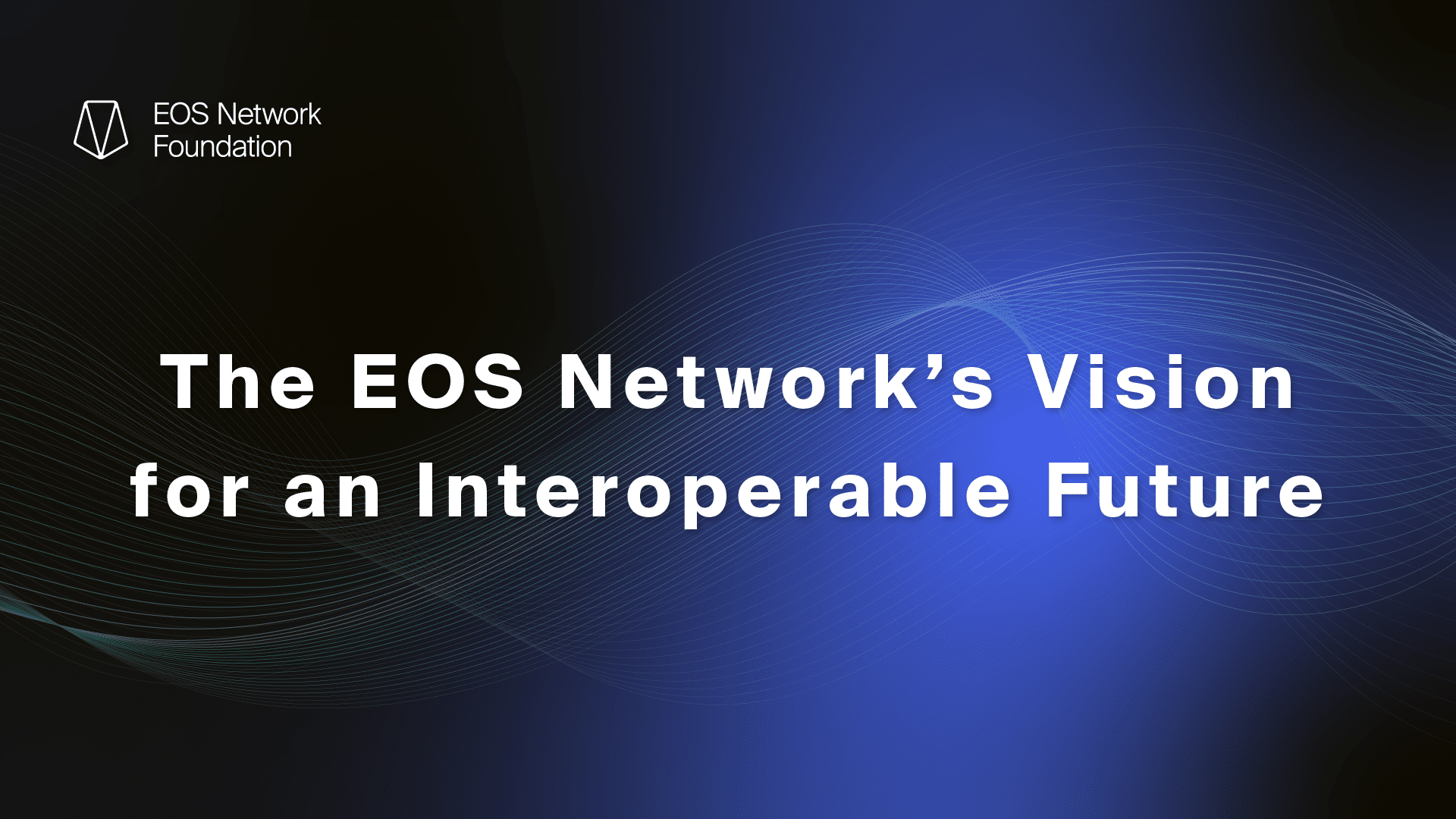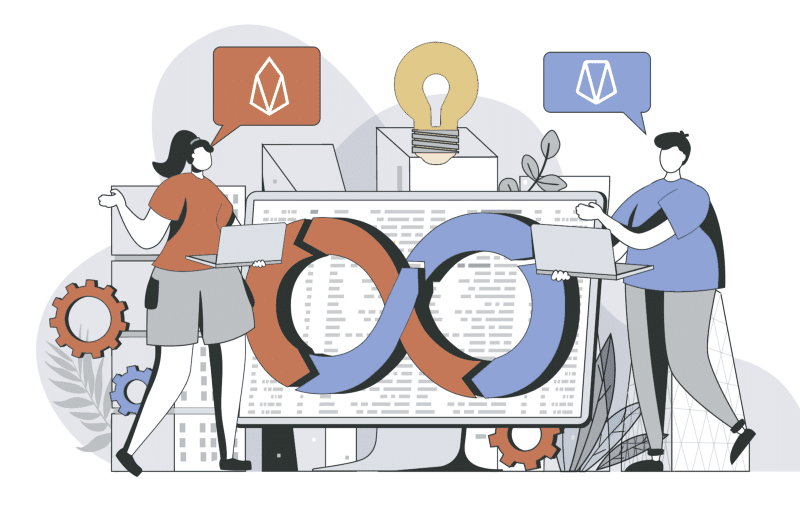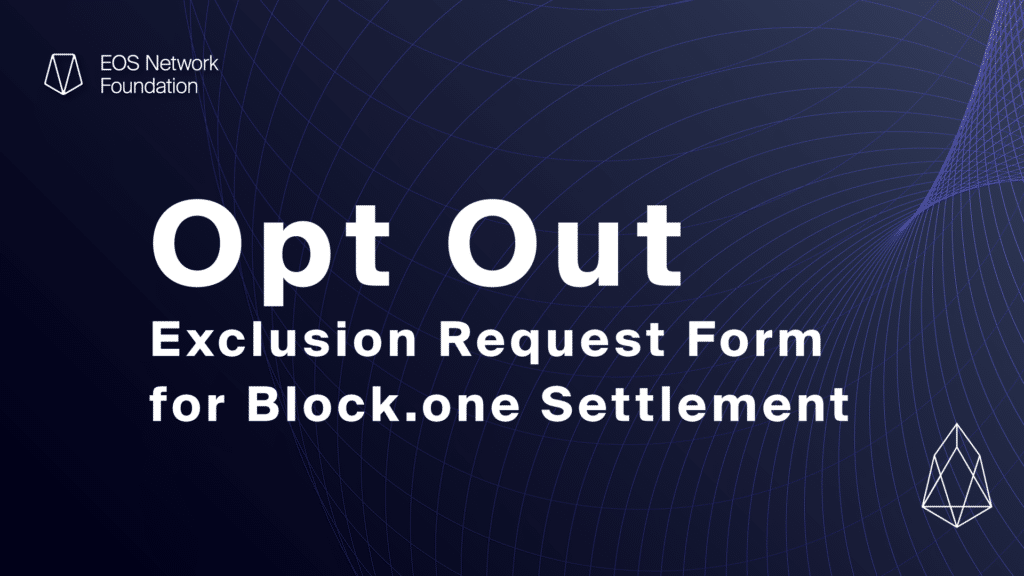The world of web3 is a constantly evolving web of blockchain protocols and the networks they power. Each network tends to move along its respective evolutionary path, vying for position in an intensely competitive space, while at the same time, each network must navigate the complex set of challenges and vulnerabilities introduced by the need to build bridges that connect across protocols. And although it has at times been a bumpy ride, the notion of siloed blockchains is giving way to a broader vision of interconnected, interoperable, multi-chain ecosystems. As a key player in the movement towards a more secure and interconnected web3 ecology, the EOS Network has committed itself to realizing the vision of a truly interoperable future. But what does this commitment to an interoperable web3 ecosystem truly entail? And why is it so integral to the future of EOS and web3 at large?
In this article, we will delve into the nuances of what a multi-chain future means in the context of web3. We’ll explore the essential infrastructure components required to realize this ambitious vision, and examine the strategic steps that EOS is actively taking to align with these broader ecosystem goals. By unifying different blockchain networks under a common framework of interoperability, EOS aims to not only enhance its own utility but also contribute to a more cohesive and robust web3 environment. So, let’s get started uncovering the transformative potential of this interoperable vision.
Interoperability and the Multi-Chain Thesis of Web3
Interoperability ensures that Alice can use her tokens from Blockchain A to interact with a smart contract or application on Blockchain B without going through cumbersome and costly conversion processes.
The capacity for different blockchain networks to seamlessly interact with each other, allowing for the exchange of data, assets, and even computation, is the essence of interoperability. The aim is to move beyond the walled garden networks of today, by building bridges that enable them form more dynamic ecosystems, thus reducing inefficiencies and enhancing the overall utility and reach of blockchain applications on any given network.
In line with this vision, the multi-chain thesis posits that the future of web3, or the third iteration of the web, will not be dominated by a single blockchain but will instead be a network of multiple blockchains each serving specialized use-cases and communities. This future ecosystem of value will involve a web of interconnected blockchains that share liquidity, data, and users.
Key Concepts to Know:
Bridge:
A bridge serves as a connector between two different blockchains, allowing assets and data to move back and forth between them. These bridges can be centralized or decentralized and often involve smart contracts that lock assets in one chain and mint corresponding tokens on the other chain. The goal is to enable fluid transactions across separate blockchain networks.
Oracle:
Oracles are third-party services that provide smart contracts with external information. They serve as the link between blockchains and the outside world, allowing for the incorporation of real-world data like weather, stock prices, or even election results into blockchain-based applications.
Smart Contracts
Any user-deployable logic running on-chain can be considered a smart contract. More broadly speaking, smart contracts are self-executing contracts whose terms are effectively written into lines of code. They are often the backbone of decentralized applications (dApps) and are crucial for automating a wide range of processes in the blockchain ecosystem.
Understanding these concepts will offer you a solid foundation from which to appreciate the significance of The EOS Network’s steps towards building an interoperable, multi-chain future; a subject that we will explore in some detail within the remainder of this article.
Interoperability as A Strategic Imperative: Introducing Antelope IBC
The commitment to interoperability isn’t just an abstract ideal for the EOS Network Foundation (ENF); it’s an operational necessity integrated into the very base layer of the EOS ecosystem. The ENF’s formative efforts to resuscitate and liberate the EOSIO codebase gave rise to the community-led, free and open source Antelope Protocol. While working alongside its partners in the Antelope Coalition: Telos, UX Network, and WAX blockchains, the ENF has consistently prioritized the extensibility and flexibility of Antelope Leap, the core C++ implementation of the protocol that powers EOS and other Antelope based chains.
Antelope IBC can be thought of as a mesh of trustless bridges between the various blockchains in the Antelope community.
Through collaboration with Antelope Coalition member UX Network, and ENF Engineers, The Antelope Coalition’s launch of Antelope Inter-Blockchain Communication (IBC) now provides trustless IBC between all Antelope-based blockchains, effectively facilitating seamless horizontal scaling. In this highly novel approach, Antelope IBC can be thought of as a mesh of trustless bridges between the various blockchains in the Antelope community. By offering such an elegant and efficient way for these blockchains to interact, Antelope IBC sets the stage for a more cohesive and capable ecosystem, underpinned by trustless and secure cross-chain transactions. For a deep dive into how Antelope IBC achieves this, you can read the article here, and explore the Antelope Inter-Blockchain Communication (IBC) smart contracts infrastructure documentation.
New Insights from the IBC Webinar
A recent webinar entitled “Exploring Antelope IBC: A Webinar for Aspiring Builders” offered a wealth of information on the inner workings and future directions of Antelope IBC. Lead developer Guillaume Babin-Tremblay hinted at ambitious plans for extending the trustless IBC to other popular networks, including Ethereum.
“Building bridges is not just about connecting chains, it’s about unlocking the potential of every network. We see Ethereum as a key pillar in this interconnected future we are building with Antelope IBC.” —Guillaume Babin-Tremblay
This is particularly noteworthy given Ethereum’s broad user base and its multitude of DeFi and NFT projects, which could potentially be made accessible to EOS users and other Antelope Coalition blockchains alike. To sign up and view this enlightening webinar, you can visit the official registration link.
EOS EVM: Enhancing Interoperability with Third Party Bridges & Oracles
Turning our focus now to the EOS EVM (Ethereum Virtual Machine), we find yet another layer of opportunity when it comes to interoperability. EOS EVM serves as an interface that allows EOS to emulate the functioning of the Ethereum blockchain. This compatibility layer opens the door for Ethereum-based applications to run on EOS, but it also presents opportunities for enhancing interoperability through third-party bridges and oracles.
The Role of Oracles in EOS EVM
Oracles play a critical role in enhancing interoperability by acting as a conduit for real-world data into the blockchain ecosystem. Given that smart contracts cannot access external data on their own, the role of oracles becomes all the more essential. When it comes to EOS EVM, third-party oracles can bridge the gap not only between real-world data and EOS but also between EOS and other blockchain networks, like Ethereum.
Operational Bridges & Oracles on EOS EVM
- The EVM Trustless Bridge: A bridge solution that provides seamless asset transfer between EOS and Ethereum, without requiring intermediaries.
- MesonFi: A leading unified stablecoin bridging protocol, Meson leverages Multichain’s USDT (multi bridge) token contract to optimize for cross-chain swaps between 20+ stablecoins on 14+ EVMs & non-EVM chains and layer 2’s, enabling a seamless cross-chain experience for stablecoins like USDC, USDT, and BUSD.
- Nerve Network: A decentralized digital asset service network that strives for a safe, free, and transparent DeFi service. Its products, NerveBridge, NerveSwap, NerveFarm, and SwapBox, fully support EOS EVM and deliver seamless bridge service.
- Pyth Network: Recently, the release of the EOS/USD price feed by Pyth Network was announced. Pyth is known for offering reliable, low-latency market data sourced from institutional players. Such high-fidelity oracle feeds are essential for developers building mission-critical applications. The EOS/USD price feed, as well as the general Pyth oracle on EOS EVM, are now live.
To learn more of what Pyth has to offer the EOS ecosystem you may want to explore the following resources.
- How Pyth Works: https://docs.pyth.network/documentation/how-pyth-works
- Low-Latency Pull Oracles: https://pyth.network/blog/pyth-a-new-model-to-the-price-oracle
- Pyth on EOS: https://docs.pyth.network/documentation/pythnet-price-feeds/evm
Downsides of Third-Party Solutions
Reliance on third-party bridges and oracles is not without its challenges. These include potential vulnerabilities to malicious attacks, added latency due to multiple layers of communication, and the issue of trust when dealing with third-party providers. Indeed, as CoinTelegraph reports in their report, Half of all DeFi exploits are cross-bridge hacks, “Over $2.5 billion have been stolen from cross-chain bridges in the past two years.” Such concerns underline the importance of building secure and trustless solutions.
Recognizing these vulnerabilities, engineers at the EOS Network Foundation (ENF) have been hard at work building out trustless bridging solutions on the EOS EVM. While third-party solutions have their role in extending the EOS ecosystem’s reach, internal trustless solutions offer a higher level of security and reliability. In the next section, we’ll delve deeper into how ENF is spearheading initiatives to build robust, trustless bridges, aiming for a more secure and seamless cross-chain future.
The EOS EVM Trustless Bridge: Pioneering Seamless Interoperability
In an age where seamless interaction between various blockchain ecosystems is a key element of mass adoption, the EOS Network Foundation (ENF) is going all in on building trustless bridging solutions on the EOS EVM. This initiative addresses the limitations inherent to third-party bridges by focusing on security, efficiency, and user-friendly interfaces.
Security:
As the name implies, the EVM Trustless Bridge provides a trustless mechanism to move tokens and data between the EOS EVM and the EOS Native environments. “Trustless” in this context means there is no additional trust needed by the user than that which they already have for the secure operation of the EOS EVM Contract and generally for the security of the EOS blockchain itself as a smart contract platform. The bridge operates without needing any intermediaries that hold secret keys and sign messages for the two environments at either end of the bridge.
Efficiency:
The EOS EVM operates as a smart contract running on the EOS blockchain. This provides an opportunity to, in many cases, execute the full process of transporting data and assets from one environment to another within a single atomic EOS transaction. A user that deposits their tokens from the EOS Native environment to the EOS EVM can see that deposit initiate and complete as quickly as it takes to process an EOS transaction. Additionally, if the deposit transaction fails for any reason, the system is not left in a state where, for example, tokens are locked and the user needs to wait for an automated refund process to complete or the user needs to initiate a manual process to reclaim their tokens. The same benefits of atomicity hold for the EOS EVM to EOS Native direction at least for the withdrawal of EOS and some other tokens. For general IBC from EOS EVM to EOS Native, a two-phase non-atomic solution will be required; however, EOS still enables the finalizing second phase to complete within 0.5 seconds of the initiating first phase.
User-friendly:
The EVM Trustless Bridge has been designed to provide a seamless token deposit/withdrawal experience for EOS EVM users who may not even have EOS Native accounts. A user can deposit their EOS (or other supported tokens) from a centralized exchange directly into their EOS EVM account by providing their account address in the transfer memo. A user can also withdraw their EOS (or other supported tokens) from EOS EVM directly to any EOS account (including that of a centralized exchange) with the memo expected by the destination account by using a convenient frontend tool for the EVM Trustless Bridge that works with common EVM wallets like MetaMask.
Current Features of the EOS EVM Trustless Bridge:
Deposit EOS to an EVM Account:
Users can deposit EOS from both their EOS Accounts and Centralized Exchange Accounts directly to their EOS EVM Address.
Depositing from a Centralized Exchange Account:
This feature eliminates the hurdles involved in EOS Account creation and resource management, making it easy for users unfamiliar with EOS to onboard quickly.
Depositing from an EOS Account:
For those who already have an EOS Account, the bridge facilitates deposits to EOS EVM Addresses by sending EOS to the EOS EVM Contract Account and specifying the intended EVM Address in the memo field.
Withdraw EOS from EOS EVM Address:
Users can withdraw EOS back to their external EOS accounts, providing they connect their EOS EVM Wallet to the bridge and specify the balance to send.
Withdrawing to an EOS Account:
This simple withdrawal process requires only the destination EOS Account and the specified token balance to send. The memo field is optional.
Withdrawing to a Centralized Exchange Account:
The process mandates specifying the destination EOS Account of the exchange and an appropriate memo field to act as a unique identifier within the exchange’s system.
Collaboration with Exchanges for Inline Actions
The EOS Network Foundation has been actively working to get exchanges integrated and supporting inline actions, which create a more direct, efficient bridge between the exchanges and EOS EVM.
Progress with Major Exchanges
Both OKX and Gate.io recently enabled inline actions, and withdrawals of EOS from the EOS EVM directly to OKX accounts are now possible! This essential feature paves the way for even smoother transactions and broader adoption. With tokens such as USDT slated for addition, this popular stablecoin will also be supported via inline actions.
In addition to these, the ENF is actively doing everything within its capacity to facilitate the addition of inline actions for Binance, one of the world’s leading cryptocurrency exchanges.
The Future of Trustless Bridging on EOS EVM
The current trustless bridge allows for the secure, risk-free transfer of EOS tokens between Native EOS and EOS EVM environments. An advanced version of this bridge is planned to roll out in two stages, aiming for deeper integration and communication between EVM and EOS smart contracts.
The ultimate goal is to enable these contracts to communicate as seamlessly as contracts on different Antelope chains do, thanks to the Antelope IBC. Given that both EOS and EOS EVM are on the same blockchain, this communication can happen more efficiently without the need for cryptographic signatures or waiting for transaction finality.
Trustless Bridge USDT (EOS) Support
In the first stage, the focus will be on building a minimal foundation to support the transfer of any eosio.token-compatible tokens, like USDT. This foundation will later be expanded to support more complex, IBC-like communication mechanisms. This two-stage development approach aims to strike a balance between immediate usability and future extensibility.
The EOS EVM Trustless Bridge is not just a tool; it’s a major stride toward a more integrated, accessible, and secure Web3 ecosystem. With the continuous evolution of this trustless bridge, EOS is well-positioned to be at the forefront of the blockchain interoperability wave.
EOS Network
The EOS Network is a 3rd generation blockchain platform powered by the EOS VM, a low-latency, highly performant, and extensible WebAssembly engine for deterministic execution of near feeless transactions; purpose-built for enabling optimal Web3 user and developer experiences. EOS is the flagship blockchain and financial center of the Antelope framework, serving as the driving force behind multi-chain collaboration and public goods funding for tools and infrastructure through the EOS Network Foundation (ENF).
EOS EVM
The EOS EVM is an emulation of the Ethereum EVM, housed within an EOS smart contract. It offers feature parity to other EVMs in the space but with unmatched speed, performance and compatibility. EOS EVM connects the EOS ecosystem to the Ethereum ecosystem by allowing developers to deploy a wide array of Solidity-based digital assets and innovative dApps on EOS. Developers can use EOS EVM to take advantage of Ethereum’s battle-tested open source code, tooling, libraries and SDKs, while leveraging the superior performance of EOS.
EOS Network Foundation
The EOS Network Foundation (ENF) was forged through a vision for a prosperous and decentralized future. Through our key stakeholder engagement, community programs, ecosystem funding, and support of an open technology ecosystem, the ENF is transforming Web3. Founded in 2021, the ENF is the hub for EOS Network, a leading open source platform with a suite of stable frameworks, tools, and libraries for blockchain deployments. Together, we are bringing innovations that our community builds and are committed to a stronger future for all.



